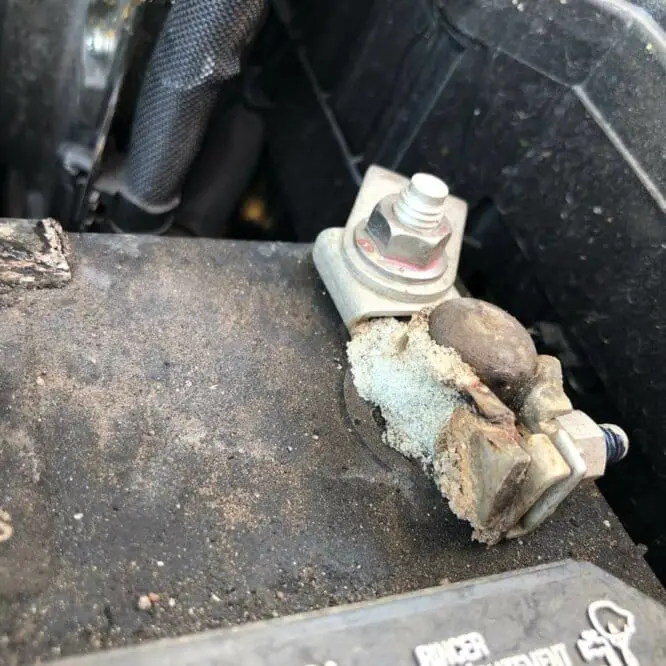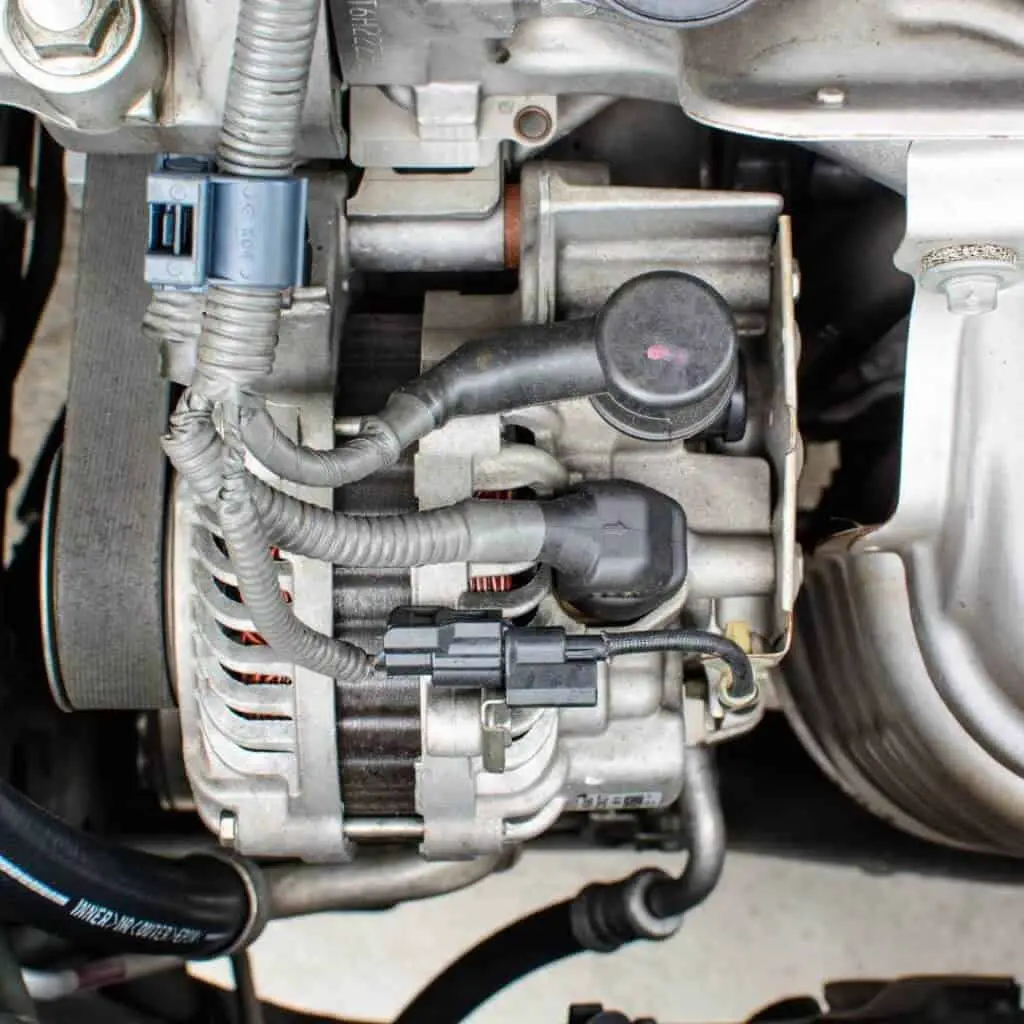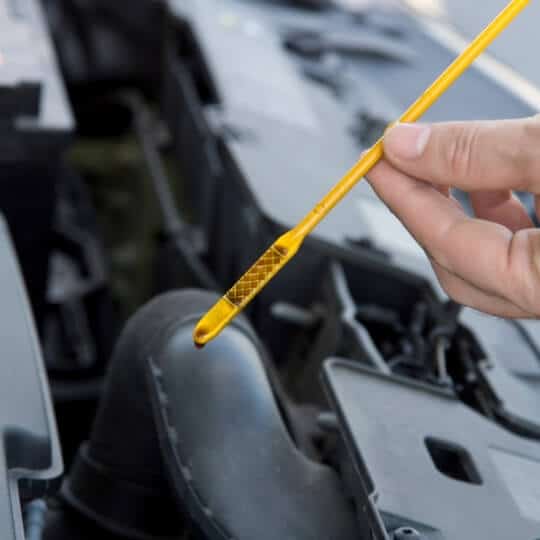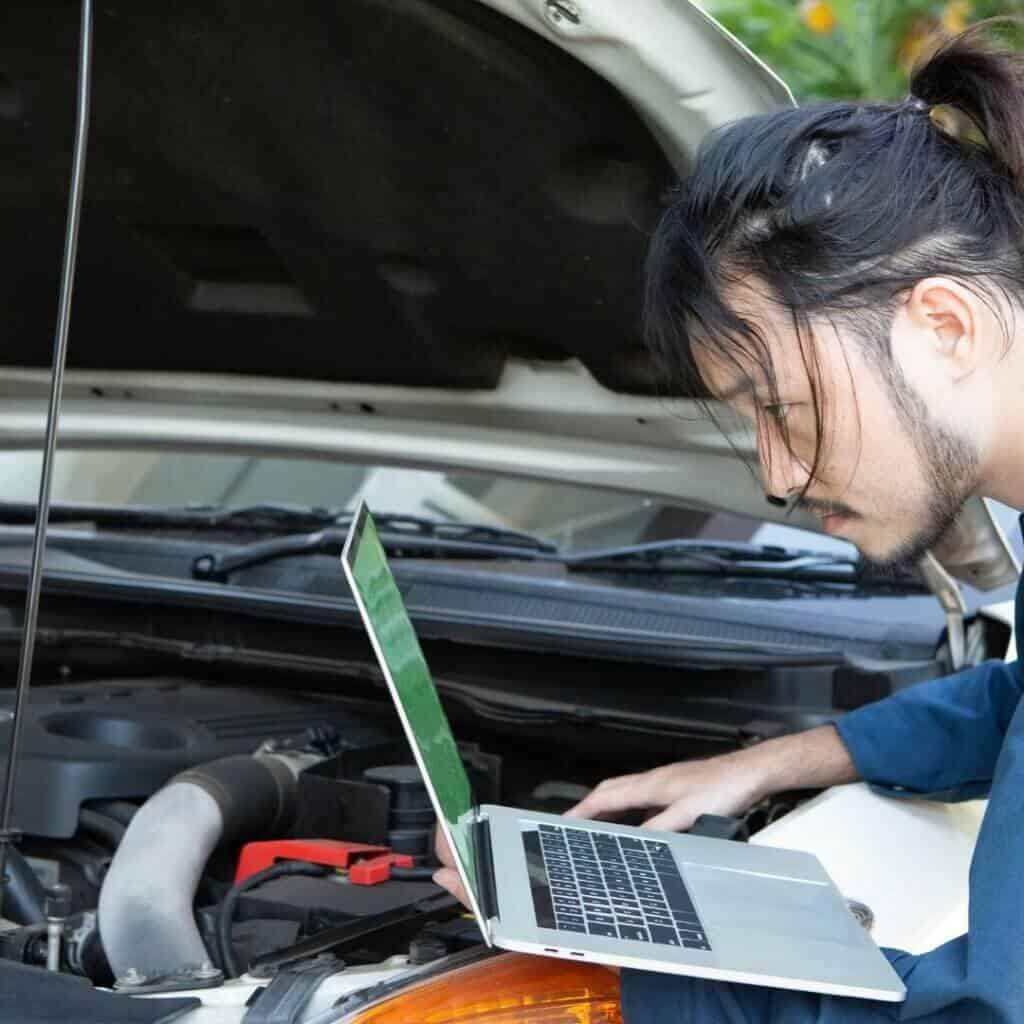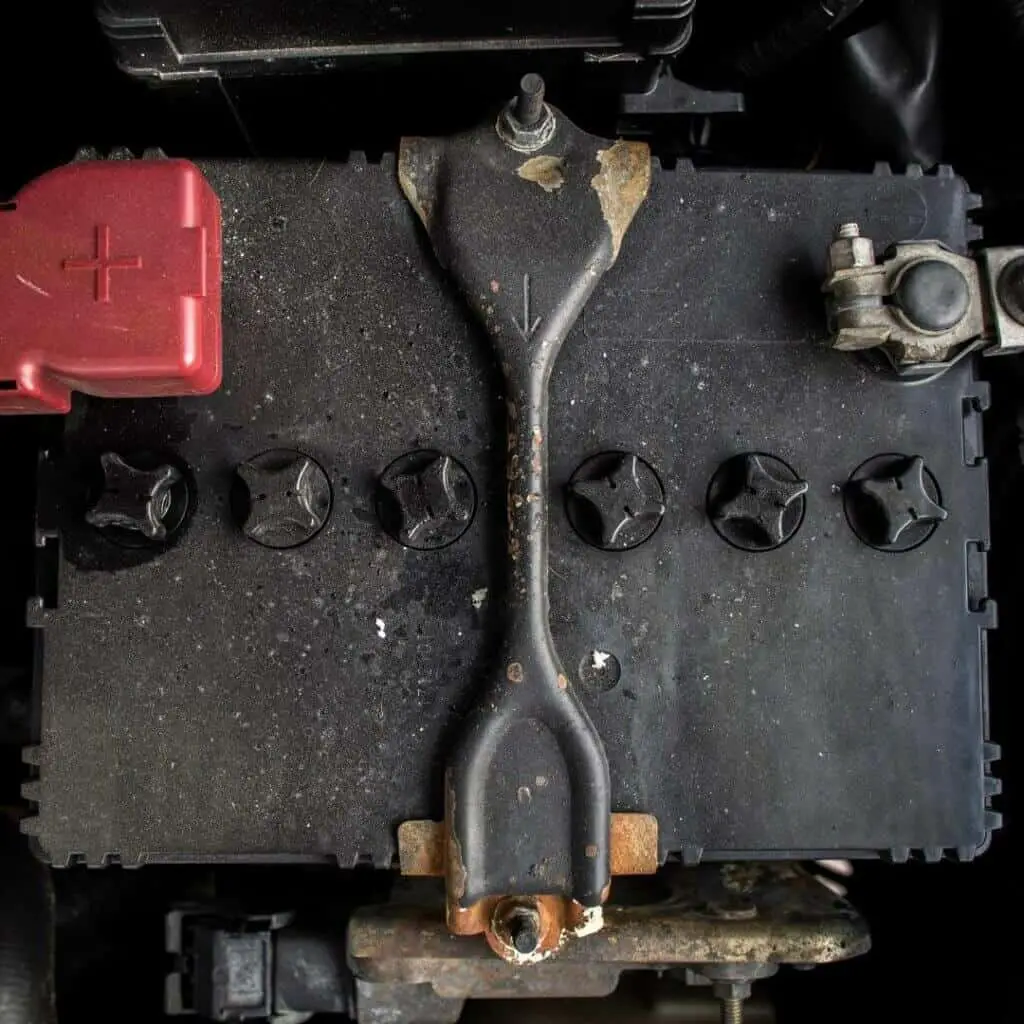Batteries in cars and other vehicles are susceptible to corrosion. But can corroded battery terminals cause a car not to start?
Your car could stall out due to corrosion or a small alteration. For the battery to operate well, proper maintenance is required.
But is battery corrosion such a serious issue that automobile owners should be concerned?
Can corroded battery terminals cause a car not to start?
Rust on the battery terminals can indeed prohibit a car from working. Corrosion may result in a poor connection to the battery, which is the source of this. The battery may not function properly, and the car won’t start if it is not connected properly.
The battery must have a strong metal-to-metal connection to work at its peak. Rust and oxidation should not exist. [1]
Loose connections on the battery terminals most frequently cause improper car start or no start. Make sure to keep the battery poles and terminals clean and free from oxidation-related rust and corrosion. Battery terminals link battery cables and the complete electrical system of the car to the battery. Most often, they are constructed of lead or other strong conductive metal.[2]
What Is Car Battery terminal Corrosion?
Corrosion on battery terminals is simple to spot. It is the white, green, or bluish substance found on your car’s battery terminals or cables. Lead sulfate or anhydrous copper sulfate is the white material surrounding battery connections. [3]
When in contact with water, anhydrous copper sulfate turns blue. A common problem with copper connectors is hydrated copper sulfate, which can be seen near corroded battery terminals. Due to the increased resistance, it causes within the circuit; battery degradation is a poor conductor of electricity.
The resultant transitory current flow might cause the increased resistance to grow, which frequently results in your automobile not starting.
Signs of Bad Battery Terminal Ends
Battery terminals are the first contact point between the battery and the vehicle’s electrical system. This means that they should be maintained to ensure smooth operation. When the terminals start to malfunction, they typically show a few signs that can alert the driver.
- Vehicle starting issues
One of the first signs of an issue with the battery terminals is trouble starting the car. Corrosion along the battery’s terminals may obstruct the connection and make it difficult for the vehicle to start.
Rusted or loose battery terminals may be to blame for this. Consequently, when you turn the key, the car may have trouble starting, cranking slowly, or clicking quickly.
- Battery corrosion
Visible corrosion is one of the most typical signs of a battery terminal problem. The terminals are vulnerable to rust because of the direct contact with the battery and are exposed to acidic vapors.[4]
The terminals’ ability to conduct power may be hampered by corrosion, which might entirely obstruct the flow in extreme situations. Any problem can be found by checking the terminals for any indications of chalky white or blue corrosion.
- A loss of electricity
Electrical power loss is another typical sign of a damaged battery terminal. This typically happens when a terminal has broken or is heavily rusted.
A terminal with extensive corrosion or damage that doesn’t create adequate electrical contact could render the device completely powerless. Terminals with this much corrosion will often need to be replaced. [5]
Battery terminals are relatively basic and affordable, but they are crucial to the entire performance of the car’s electrical system. A professional should determine whether you need to replace the terminal ends or if another repair is more suited.
What Causes corrosion on battery terminals?

- Gaseous hydrogen: The hydrogen gas produced by the battery acid causes battery deterioration. This gas and other substances cause the corrosion you see on the battery terminals in the atmosphere from the hood. The battery may be undercharging if corrosion develops on the negative terminal. Conversely, overcharging exists if the rust forms on the positive side. Since most cells are undercharged, corrosion frequently occurs on the negative side of batteries.
- Leakage of the electrolyte: Lead-acid batteries and electrolytes have many similarities. Due to aging and corrosion, the battery’s electrolyte might leak and accumulate on the cell terminals. If you overfill the battery with water, there is a chance that the electrolyte will leak.
- Corrosion of copper clamps: Since it won’t rust easily, copper is a good conductor. However, copper sulfate is produced when an electrical current flows through the copper clamps.
- Overfilling and overcharging. Once the battery has been overfilled with water, electrolyte leakage through the vents will eventually damage the battery connections. Make sure to fill the battery with only the prescribed amount of water. The battery can be overcharged and get the same result. Once charged beyond its capacity, electrolytes will leak and may overflow over the battery terminals, where they may cause corrosion.
To stop the corrosion from continuing to accumulate, you must clean it as soon as possible . Corrosion prevention can only be used to reduce or delay. If you don’t maintain your batteries regularly, corrosion will occur. By using a lubricant on the battery terminals, rust can be slowed down.
It’s not necessary to apply too much, but you must ensure that the entire metal portion of the pole is covered. Over time, corrosion will reappear and degrade the grease. Therefore, routine cleaning is necessary to stop it from accumulating.
Will corrosion drain the car battery?

Yes, among the major causes of a flat battery is corrosion. A rusted battery will make it impossible to top out the cell’s charging system while driving. Additionally, it will result in loose wires on the battery terminals, which can be a serious issue [6].
Without proper care, the battery in your automobile may deteriorate, leaving you without a functional vehicle. In addition, a battery’s life can be shortened by corrosion, which can drain its energy. Battery corrosion is frequently visible at the terminals; thorough cleaning can fix this issue.
Other reasons why your battery is always drained
There are many causes for a car or truck battery to fail continually. For example, it can result from improper battery care and maintenance. But these are only a few things that can cause a dead battery.
- Leaving lights on overnight: Your battery can be completely drained by headlights or dome lights the night before, leaving it dead the next day. After parking, you must properly inspect your inside lights. While most headlights can handle being on for a brief period, a weak electrical system may always leave them on.
- Weak Battery: Longer charge retention may not be possible with a poor battery. Even the smallest drains, like the memory of your car stereo, can cause a weak car battery to die.
- Corrosion of batteries: A poor or bad connection could be caused by battery corrosion. Your battery may cease to function as a result of a loose connection.
- Parasitic Drains: It only takes one parasite to drain your battery to zero. This parasitic drain may originate from your trunk light, which activates improperly and is left on continuously.
- Extreme temperature conditions: The varying temperatures of the weather might never have an impact on a good battery. Severe weather conditions, however, may cause an already weakened battery to fail.
- Charging Issues: There is a good chance that your battery has charging issues if it dies while driving. Also, your alternator won’t function properly if your belt is too loose or your tensioner is damaged.
How to Prevent Battery Terminal Corrosion
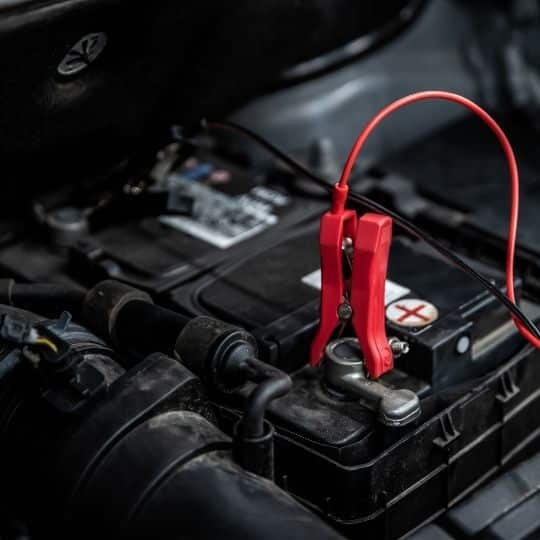
Here are a few precautions to assist you in keeping your battery protected against corrosion.
- Copper terminal compression
One of the finest products you can use to prevent corrosion is copper for terminals. This is because the entire clamp will be connected to an electric current if you have a copper terminal.
- Battery Charging
One of the major causes of corrosion overcharging or undercharging the battery. The ideal voltage for the battery is frequently highlighted in the documentation that battery manufacturers include. If you don’t want the battery to rust, you should closely adhere to the advice.
3. Anti-Corrosion Sprays
Some sprays can be easily found on the market that combat battery corrosion. Anti-corrosive sprays applied to the battery terminals can help stop the build-up. If the cost of the spray is too high for you, another option is to use grease. Various coated pads can be used to prevent battery terminal corrosion.
Does a corroded battery need to be replaced?
A rusted battery can occasionally not be adequately cleaned. Or perhaps it has other problems that call for a replacement. Be sure to take notice of the battery’s case’s condition when you inspect it. Avoid attempting to clean the rusted terminals and cables if it is leaking or swollen. Instead, get a new automobile battery at your neighborhood auto repair shop.
Here are a few signs that you need a new battery rather than cleaning or repairing the old one:
- You have difficulty starting your car, or it won’t start at all. This is caused by the engine cranking slowly.
- The check engine lamp is illuminated. This might be due to numerous factors, but it can also occur when the battery is running low and about to die.
- Low battery fluid – check the battery’s side. The fluid level can frequently be seen through a clear glass. Ask the mechanic regarding battery testing or replacement if the leak is below the lead plates.
- Age – If the battery is older than three years, it should be considered brittle.
Read Next: Battery Low Start Vehicle


